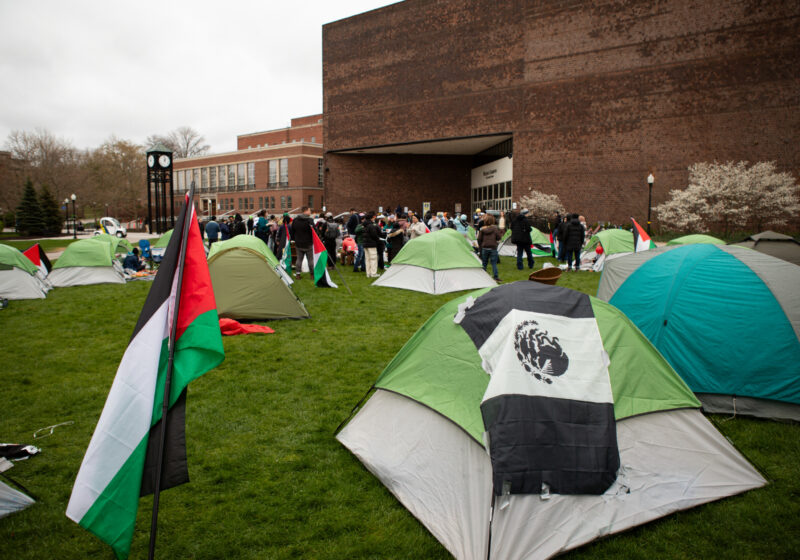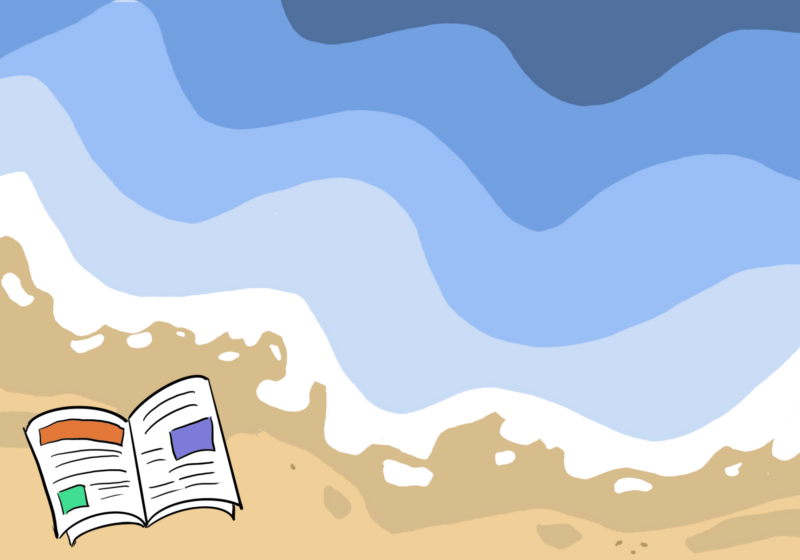Bringing back what was once a small campus tradition, Sunday afternoon “tea talks” have been reinstated at Rush Rhees Library with current or retired members of the UR faculty and staff presenting talks on their side interests. Distinguished Alumni Professor of Surgery Dr. Seymour Schwartz spoke Sunday to an intimate group in the Welles-Brown Room on his passion for map collecting.
The presentation, entitled “The Anatomy of Psychopathy,” was an exploration of Dr. Schwartz’s large collection of maps and the evolution of his hobby, which quickly became an obsession.
“I think you’ll agree with me that the hobby that I’m going to emote about has become somewhat of a psychopathy,” he said. “I’d like you all to assume the position of my psychiatrist and allow me to expound on the passion that I have.”
Schwartz spoke first of his hobby’s origins.
“It began in 1963 when my wife said to me, ‘You’re somewhat monolithic, you have no diverse interests, you need a hobby.’ I said ‘fine, you’re right,’ and she went out to find me one,” he said.
“There was an old bookstore by the name of Gilby’s. She went in and I think she picked the cheapest book that she could find because it cost 25 cents – it was an English book on maps and mapmaking, in fact the only book on that subject that they had at the time. I read the book and it became of interest and I started purchasing maps.”
Schwartz first showed a map of the Chesapeake Bay area that was purchased in Manhattan in 1963, which is now worth significantly more, and spoke on the idea of collecting as not a product of profit.
“I bought this map for $55. I might add, parenthetically, that the last price of this map was $3,250,” he said. “This brings me to an evangelical statement. If somebody becomes a collector you don’t think about the appreciation of the item because in fact I have never sold a map, though they have appreciated quite a lot. I have traded them, but the maps, you don’t collect for the stake or the acquisition thereof.”
Maps of early America mainly interest Schwartz, who collected maps dating from the 16th through the late 18th century. One particular map was an English interpretation of North America and their land possessions.
“The largest map of North America prior to the American Revolution, [the map] was erroneous in many, many features. It was an English map and you can see the concept that the English had that their belongings went from the sea to as far west as possible,” he said.
Schwartz then spoke of how his collection narrowed down to dealing primarily with North America.
“Up to this point in time I was an acquirer sporadically and a map dealer said ‘are you going to develop a focused collection’ and I said ‘I don’t know.’ And he said he thought it might be interesting and he came forth with his sales pitch immediately and it was the first map of America available.”
He then became a serious collector and realized he needed some basics before embarking on additional map collecting.
“First I had to fill in the holes of maps of the world which were significant to the discovery and evolution of America and subsequently the United States,” he said.
Schwartz spoke of his hobby leading to other interesting experiences.
“The earliest map to have the word America on it was a map by a German by the name of Waldseemueller and a map that the Library of Congress just purchased for $10 million. I actually had a role in it because I testified in front of the Appropriations Committee of Congress to assess the value of the map.”
Later on he showed a 1513 map published by the man who named America, and discussed the misnomers of the continent which remain today, with the Americas still improperly credited to Amerigo Vespucci.
“The map shows Columbus’ discovery, a suggestion of the Gulf Coast before it was explored, a suggestion of Florida before it was discovered but most interestingly he erases the name Vespucci, or America, from the South American continent and puts the statement that the land was discovered by Christopher Columbus under the direction of the King of Castile, or Spain,” he said.
“I like to say it’s much like modern journalism, the headline appears on the first page of The New York Times, the retraction is in the sixth section, and as for our version of America we stand as such.”
Schwartz was questioned for buying one map because it encompassed so little land, but it turned out to be of great value.
“I was asked why I bought this map since it was only three miles of land,” he said. “That three miles was the Mason-Dixon line.”
Many of his other maps were of the New York area and Eastern coastline, all 17th-century representations.
After the slide presentation of the maps, Schwartz explained the fine points of keeping and maintaining a collection. “It’s important to have a dialogue with your collection,” he said.
“I speak to my maps and they speak back. The map of Washington is a religious experience for me. The map isn’t an icon, it’s an altar.”
He also noted the benefit of knowing a subject well, and acting as a responsible collector.
“The beauty of a map is enhanced enormously by scholarship because with maps, if you enhance the scholarship, you enhance the importance of the collection,” he said. “Collecting should be regarded as a privilege. Each person who collects has an obligation of preservation. The individual who owns a map is absolutely obliged to preserve it.”
The audience appeared to enjoy Schwartz’s presentation.
“I’m fascinated with old maps and the detail made available from woodcuts and the evolution of maps and eras that existed in early times – that fascinated me,” retired faculty member Edward Kinnen said.
“The talk was brilliant,” Program and Development Director for River Campus Libraries Andrea Weinstein said.
“We expected maybe 15 to 20 people and 30 came, so from our perspective this was wonderful. A lot of professors have a real passion for something they do outside work. Dr. Schwartz was the chair of surgery at Strong. This is his passion.”
Linden can be reached at klinden@campustimes.org


